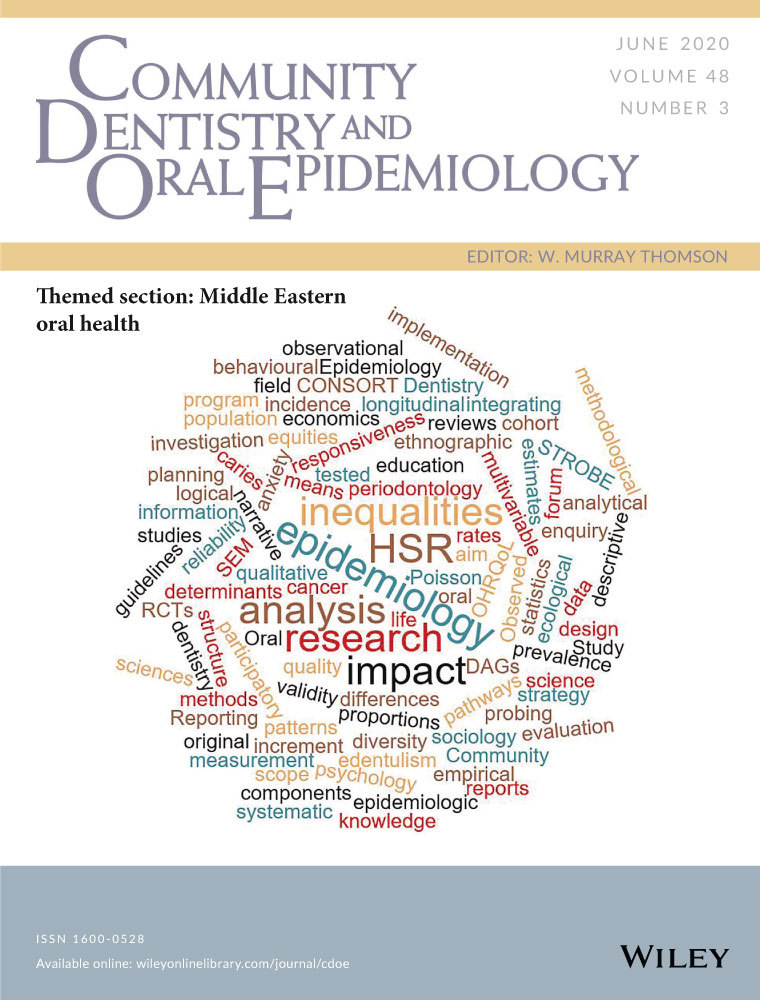Late bedtime and dental caries incidence in Kuwaiti children: A longitudinal multilevel analysis
Abstract
Objective
Inadequate sleep contributes to several adverse systemic health outcomes due to hormonal and metabolic disorders. The purpose of this study was to determine the effect of bedtime on the development of dental caries and the relationship with salivary ghrelin and leptin in a prospective cohort study of Kuwaiti children.
Methods
Data were collected from 5456 10-year-old children in 2012 and repeated in 2014. We selected children from 138 middle schools representing the six governorates of Kuwait. We derived data from oral examinations, self-reported sleep interviews, body and weight measurements, and chemical analysis of whole saliva samples. Leptin and ghrelin were determined by salivary assay in a subset of 744. Two separate analyses were performed. a) Using the entire longitudinal data set (n = 5456), multilevel random intercept analysis was conducted to assess the relationship between reported bedtime and dental caries. b) Using data from a subset of the original sample (n = 744), multiple linear regression analysis was conducted to determine the relationship between dental caries and salivary ghrelin and leptin. The outcome variable was the development of dental caries in children. The independent explanatory variables and confounders were bedtime, sleep duration, salivary ghrelin and leptin; confounders assessed were gingivitis, sex, age and governorate (school location).
Results
With every additional hour past 8 pm for bedtime, there was a 20% increase in dental caries incidence over two years (B = 0.2, P = .01), adjusting for age, gender, gingivitis and governorate. There was a significant difference in the magnitude of dental caries between the six governorates of Kuwait. Lower levels of salivary leptin and higher levels of salivary ghrelin were associated with increased dental caries, and sleep duration was an effect modifier that negatively affected the relationship between leptin and dental caries (B = −0.09, P < .05) and positively affects the relationship between ghrelin and dental caries (B = 0.07, P < .05). Additionally, there was a significant clustering effect within schools in this cohort.
Conclusion
In a cohort study of Kuwaiti children, late bedtime was associated with increased dental caries incidence. Additionally, dental caries experience increased with higher levels of salivary ghrelin and lower levels of salivary leptin, and sleep duration mediates the relationship between these two biomarkers and dental caries.




